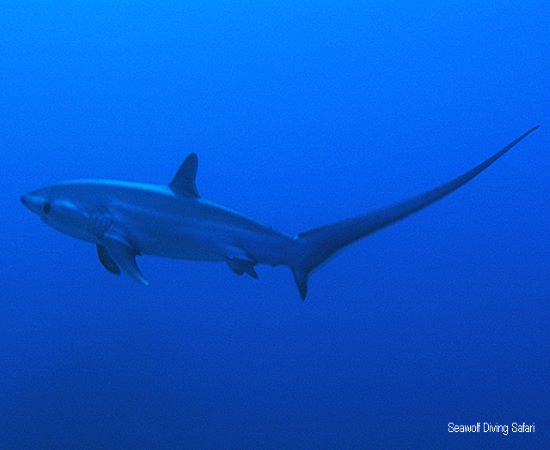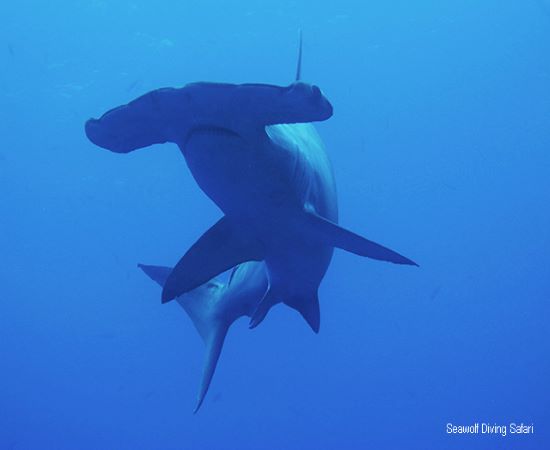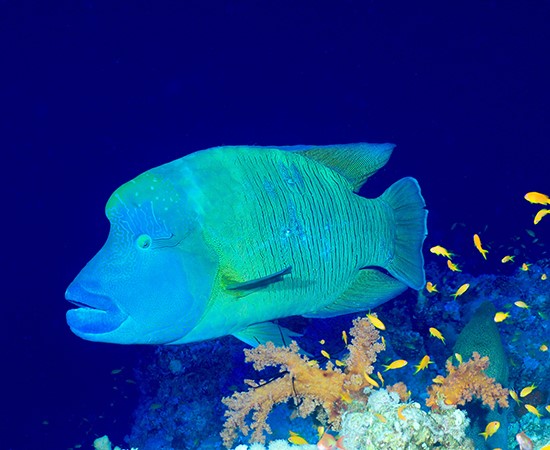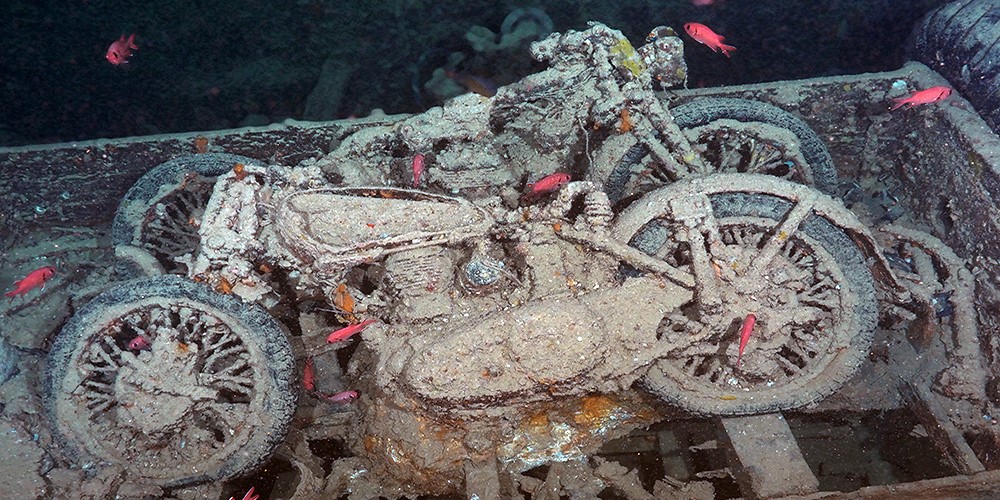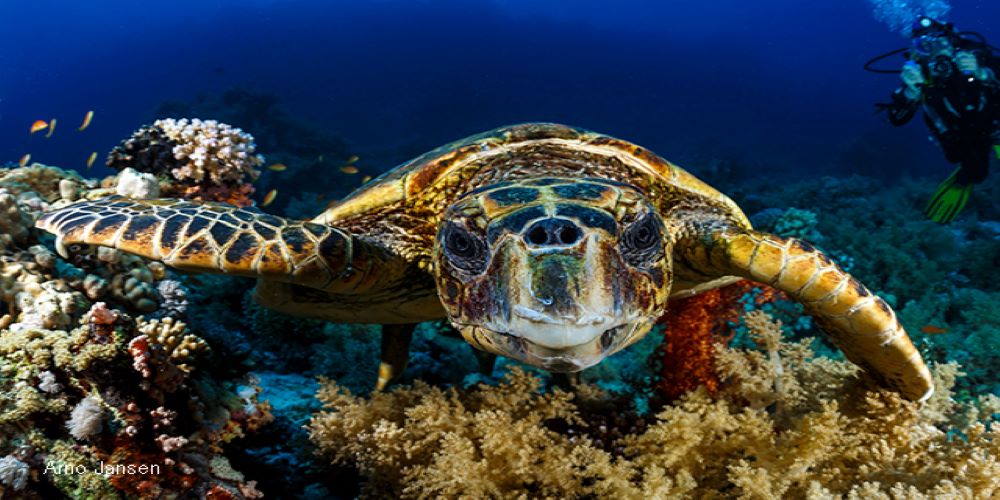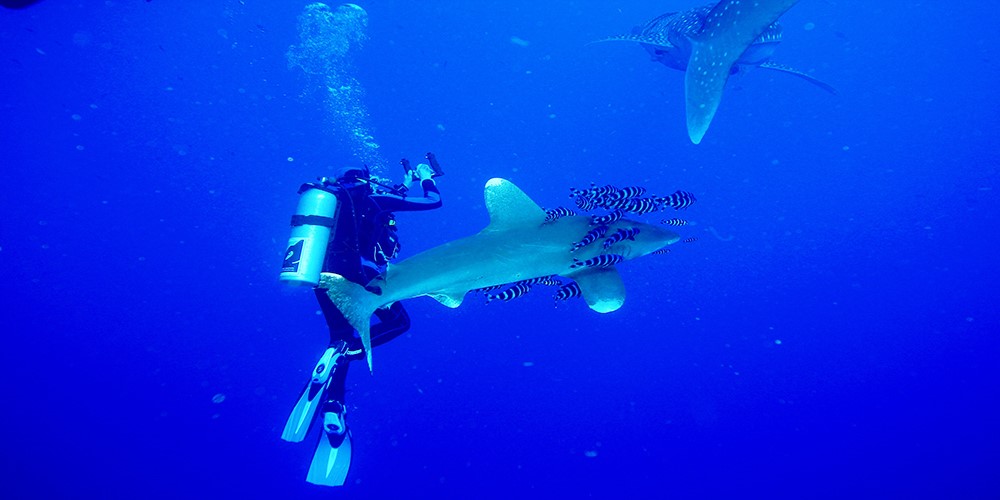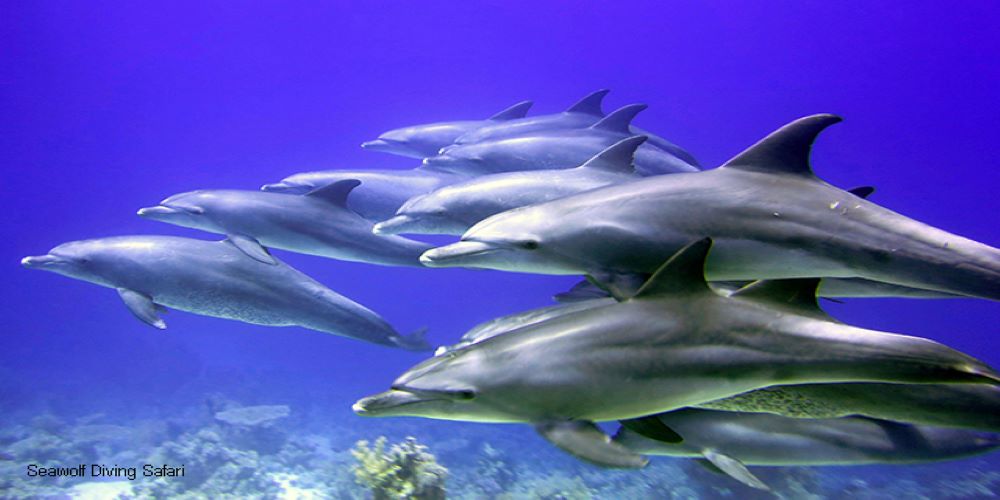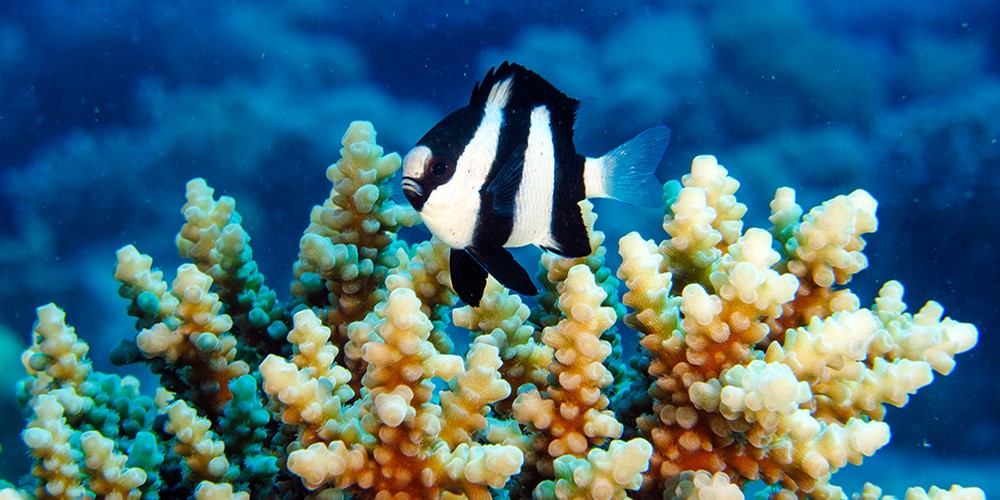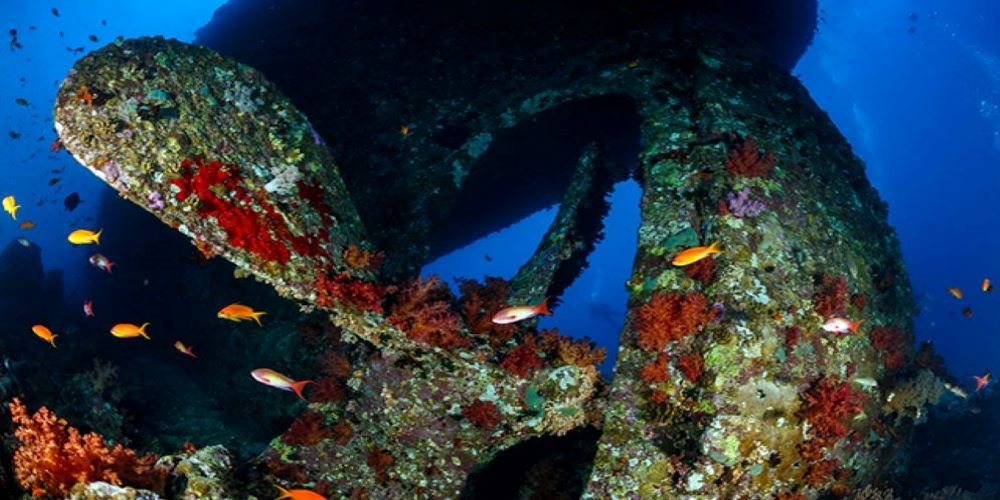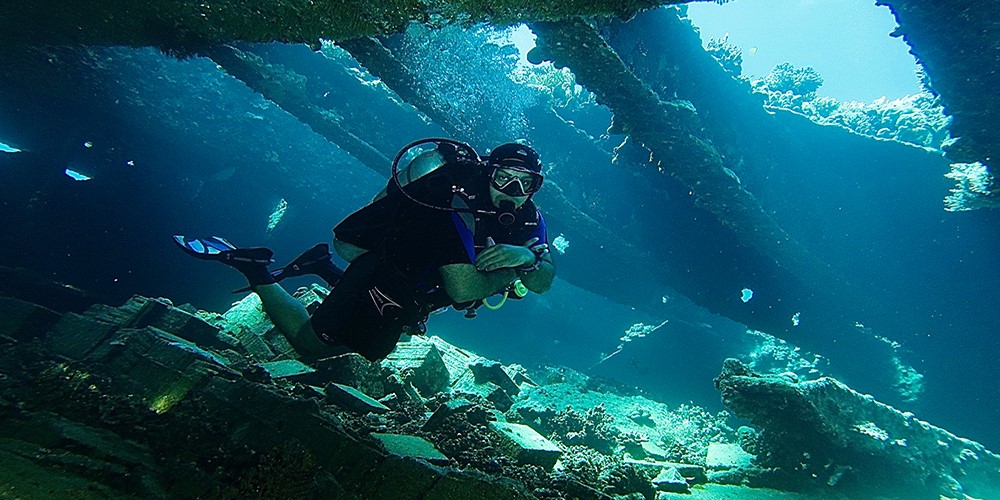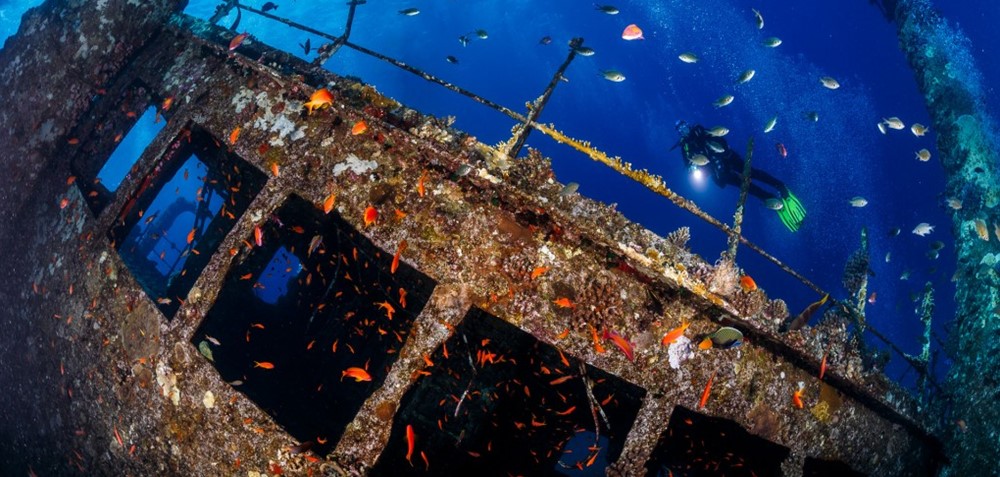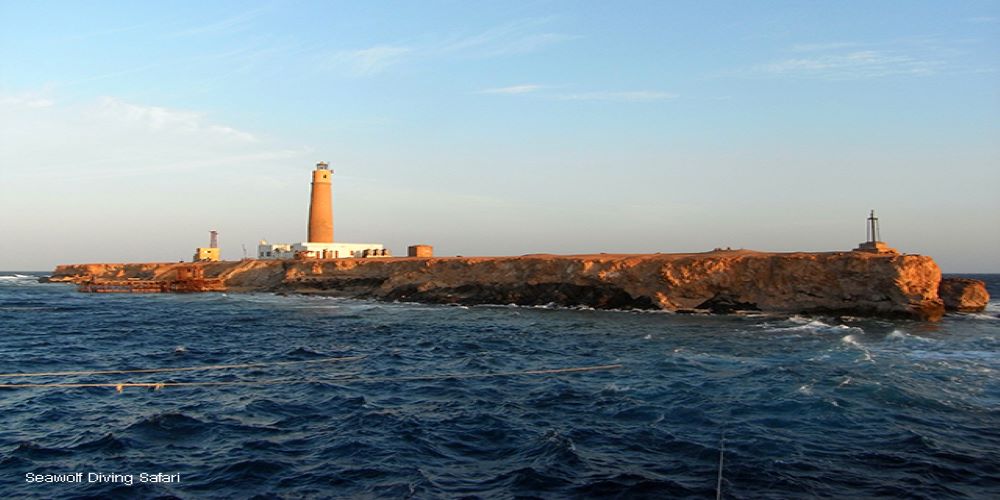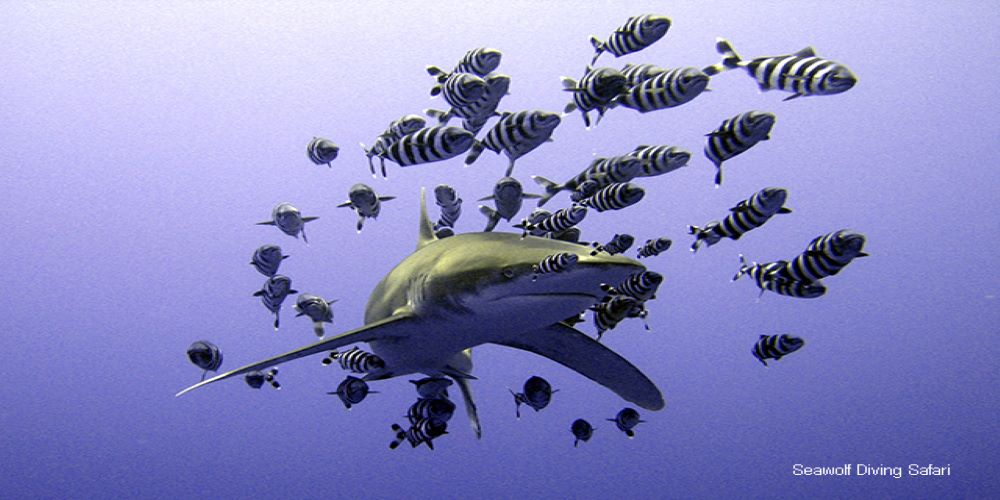North Wrecks & Brother Islands & Elphinstone
- An unforgettable combination of wrecks and big fish!
- We start either in Hurghada or Port Ghaleb and go directly to the highlights of the Red Sea.
- In the north there is a lot of "junk" to visit - among others the legendary Thistlegorm or Abu Nuhas with its 4 wrecks.
- The Brothers and Elphinstone are famous for regular shark sightings - one meets Longimanus, hammerhead sharks, thresher sharks and other fellows.
- After arrival in Hurghada or Marsa Alam, transfer to the ship, dinner and departure the next morning.
- For the underwater national parks (Brother Islands, Daedalus, Rocky Island and Zabar-gad) 50 registered dives in the logbook are required.
Expect to see
SS Thistlegorm
The English ship was on her way to Egypt to supply the English Africa Corps with supplies when she was attacked by a German bomber on 6.10.1941 and sank.
The wreck lies upright on the seabed at a depth of 30 meters.
The cargo is especially interesting: tanks, trucks, weapons, motorcycles, railroad cars as well as a locomotive.
The Thistlegorm is a must for every Red Sea diver. She is a delight for wreck enthusiasts, not to mention her spectacular cargo.
But she also offers a variety of fish. Schools of barracudas or big tunas and snappers are not uncommon here. As an artificial reef, it also attracts countless coral fish.
Abu Dabab
A unique structure makes this reef so remarkable: there are notches and small caves, also a stunning coral garden. All kinds of emperor and banner fish are at home here, but also reef sharks. Due to its location and its maximum depth of 16m, Abu Dabab I is excellent for relaxed day and exciting night dives.
In the south, almost exactly in the middle, there is a single block. There you will see bright red lionfish, as well as feather stars and at night basket stars. In addition, dolphins keep passing by in the south. In the southeast there is another collection of ergs with soft and hard corals, around which there are occasional hawksbill turtles and sharks.
To the north is the famous "Heaven one". Many stories are told around this wreck. Not far away you will find anemone colonies and a cave system overgrown with ancient corals, before diving into two lagoons on the west side with mighty corals and schools of barbels and snappers.
On the west side, an ancient coral formation stretches south with some boulders where reef sharks like to sleep. At the edge of the reef you can find remains of amphorae.
Elphinstone
From Marsa Alam the boat goes about one and a half hours north to Elphinstone Reef! The reef top of Elphinstone Reef lies at a depth of between one and three meters, depending on the water level. Strong surface currents and lots of boat traffic make snorkeling here impossible.
Divers, however, can dive right into a challenging treat! The reef is known for its exceptional biodiversity and, of course, sightings of large fish. In the north we dive on a sloping plateau from 18 to 40 meters and in the south on the underwater terraces. The west and east walls drop off steeply into the depths. The Elphinstone reef has a total length of about 600 meters and a width of 70 meters.
In large numbers we can see hard and soft corals in all colors. In addition, there are turtles, moray eels, loceanic white tip sharks, hammerhead sharks and pretty much everything that the Red Sea has to offer.
Shaab el Erg
Shaab el Erg is an extensive reef, in the shape of a horseshoe. This formation is open to the south with a shallow lagoon, which is full of ergs. The whole lagoon can be dived.
Very popular are the northern tip, the eastern wall or the southwestern tip - Gota Shaab el Erg.
Siyoul Kebira
Sometimes sand valleys (wadis) interrupt the reef, then there are overhangs and crevices to explore.
An overabundant growth of corals and countless fish amaze the diver. The dives with a mostly fast current lead to the northern tip.
Siyoul Soraya
It's a fantastic, colorful dive, where you can discover all kind of reef fishes of the Red Sea.
Abu Nuhas / Carnatic
The Carnatic, on a voyage from Liverpool to Bombay with 27 crew, 203 passengers, and a cargo of cotton, copper plates, and 40,000 pounds sterling in gold, ran aground on the reef Shab Abu Nuhas on the night of September 13, 1869. The ship initially remained on the reef, but broke apart and sank on September 15, despite various rescue attempts .
Overconfidence in the ship's stability had a disastrous effect. Since the Carnatic had not been cleared and passengers and crew members were on board, the ship took 27 people down with it . The survivors first rescued themselves on Shadwan Island and were later recovered by the Sumatra.
In October 1869, a helmet diver recovered most of the gold cargo as well as 700 copper plates. Several bodies were also discovered - one victim was still stuck in a porthole through which he had tried unsuccessfully to escape. 8,000 pounds sterling could still be in the wreck. No one has found them yet - perhaps they were secretly salvaged or disappeared under coral.
The wreck was rediscovered in 1984 and has been a popular destination for Hurghada dive boats ever since. Since then, souvenir hunters have plundered it thoroughly. The Carnatic lies on its side at the base of the reef at a depth of 20 to 27 meters. In the middle the ship is badly damaged, bow and stern are well preserved. The wooden decks have rotted away so that it is safe to enter the interior. The hull is densely covered with stone and leather corals.
Abu Nuhas / Chrisoula
After several previous owners, she finally changed to the shipping company Clarion Marine and was given the name Chrisoula K. Under this name she also made her last voyage, which took her to the area of the Abu Nuhas reef in the Red Sea on August 30, 1981 with a cargo of cheap Italian floor tiles.
Due to a navigational error by the captain, the ship ran aground on the reef during the night of August 30 and sank.
Today the wreck lies in an optimal position for divers at a depth between 5 meters and a maximum of 25 meters.
The ship is in a slight inclination, the middle part is heavily damaged by the impact.
Abu Nuhas / Ghiannis
For a long time the front half, which had run up on the reef, remained stationary and indicated the place of the accident, then it too sank and lay down on the port side.
The aft half of the wreck lies somewhat inclined on the port side. Above the front of the quarterdeck rises the smokestack with the large letters "D". The "D" stands for the name of the shipping company: Danae.
In front of the chimney is the bridge deck, behind it other spaces, a huge winch, the bollards, the intact railing, and even the frame that used to support a large awning was not damaged in the sinking.
At the base of the funnel are narrow portholes leading into the engine room. The engines are an impressive sight with their long rows of cam arms, valves and pipes.
The middle section of the ship resembles a junkyard, as iron girders are bent and torn, and the sides lie collapsed on the seabed. This area of the wreck is teeming with crocodile fish, scorpion fish and parrot fish. Some groupers have also made their home here.
Big Brother Island
The Big Brother has a length of 200m and a width of 60m. It is almost perpendicular to the north-south direction and is a steep-walled reef except for the eastern plateau. On the island you usually have the opportunity to stretch your feet, smoke a shisha with the lighthouse keeper or buy small souvenirs and enjoy the view from the lighthouse. This can change depending on the mood of the military.
The wreck of the "Numidia" lies diagonally on the reef from 15m to 75m depth. The general cargo ship hit the west side in 1901 after a navigation error. Its cargo consisted of rails and railroad wheels. It is spread around the wreck. The overgrowth of the wreck stops almost abruptly at 40 meters.
The Numidia is one of the most beautifully overgrown wrecks in the world.
The "Aida", which nestles against the reef on the southern side at a depth of 30m to 65m, has been resting there since she ran aground on the fringing reef in rough seas in 1953. She was to bring personnel for the lighthouse and material for the island. Storms in early 2010 have left the wreck a bit battered.
Around the western end there is usually high wave and some current. If it is possible to dive there in the afternoon, you have the chance to see gray reef sharks and between the wrecks hammerhead sharks from time to time.
On the eastern plateau you can see thresher sharks, also gray reef sharks can be seen there very often. Further on the north side there are nice notches and the reef wall is beautifully covered with soft and hard corals. In addition there are all kinds of fish.
To the south is the jetty that supplies the lighthouse. On both sides you will find small notches in two to five meters depth with gigantic schools of fish, hunting cornetfish, juvenile napoleon wrasse. In the open water area, hunting mackerels, tunas and barracudas often pass by.
Small Brother Island
Little Brother runs from northwest to southeast at 100m long and 50m wide. To the north, Little Brother runs somewhat wedge-shaped. Its height is 11 to 12m and it is surrounded by a fringing reef that seems to literally guard it. On the southeast side, where the moorings are, the reef drops steeply down to 10m, where there is a small reef nose that turns into a slight slope. It ends with an overhang at 37m. After that, the wall drops further into the depths. There, a lagoon like wall runs from the north to the large gorgonian garden that extends from 18m to well over 40m in the east.
Itinerary
ATTENTION: The tour description is merely our suggestion. Which diving places on tour are dived is determined by many factors including the wind and weather.
Arrival
After arrival in Hurghada transfer to the boat.
Check in, dinner and spending the first night onboard in the marina.
Departure
Departure in the morning to Shaab El Erg
Familiarization of the boat
Diving, safety and equipment briefing.
Night dive at Shaab El Erg
Abu Nuhas
Three dives at Abu Nuhas with Ghiannis, Carnatic, Chrisola
Night dive at Shaab Mahmoud K.
SS Thistlegorm
Dives at SS Thisltegorm
Brother Islands
2 Dives at Big Brother
1 Dive at Small Brother
Elphinstone Reef
Dives at Elphinstone Reef
Night Dive at Abu Dabab
Abu Nuhas
2 dives at Abu Nuhas
Return to the port.
For safety reasons you should not dive 24 hours before your flight home.
Check Out
Breakfast and check out no later than 10 am.
Transfer to the airport or hotel.

 ENGLISH
ENGLISH
 РУССКИЙ
РУССКИЙ
 DEUTSCH
DEUTSCH

